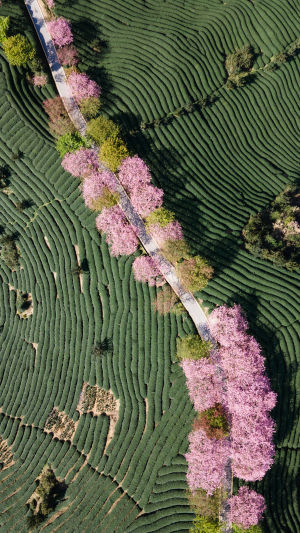<b>Nature needs our help—and so does your favorite tea.</b> Around the world, tea is grown in dozens of countries and enjoyed by millions every day. But did you know that how tea is farmed plays a big role in the survival of plants and animals?
Today, dear Lykkers, we’ll explore how adopting better farming practices can protect nature while keeping your cup of tea flavorful and sustainable.
<h3>The Link Between Tea Farming and Ecosystem Balance</h3>
<b>Understanding the impact of monocultures.</b>
Tea plantations are often based on single-crop farming systems. While this approach boosts production, it can also disrupt local ecosystems.
Researchers from the Ashoka Trust for Research in Ecology and the Environment (ATREE) in India found that these farms, if not managed carefully, contribute to a loss of biodiversity. However, when farmers include diverse crops or natural vegetation, the land becomes a haven for many species.
<b>A global footprint.</b>
Tea is grown in 25 different countries using over two dozen methods—from forest-friendly collection to more intensive plantations. Regions like Darjeeling in India, highlands of Sri Lanka, and parts of Japan offer unique insights into how farming and conservation can go hand in hand.
<h3>Agroecology: Nature-Inspired Farming</h3>
<b>What is agroecology?</b>
Agroecology blends ecological science with sustainable farming techniques. The goal is to create systems that are both productive and beneficial to the environment.
Instead of simply extracting resources, agroecology encourages a give-and-take approach, respecting local wildlife, soil health, and the natural flow of nutrients.
<b>Benefits beyond the crop</b>
According to leading researchers, a well-balanced farm doesn’t just grow crops—it helps build a healthier planet. For example, diversified farming systems maintain habitats within plantations, giving shelter to various insects, birds, and mammals. This type of farming also leads to healthier soil, more stable crop yields, and increased food security.
<h3>Examples from Around the World</h3>
<b>India: Farms that follow the path of wild elephants</b>
Some farms in Darjeeling have planned their layout so as not to block elephant migration routes. This thoughtful design allows both nature and agriculture to thrive side by side.
<b>Thailand: A return to natural forests</b>
Tea grown in Thai forests helps sustain rare and native plant species. These areas mimic the original environment, creating ideal conditions for local flora and fauna.
<b>Japan: Hundreds of grass types</b>
Japanese tea farms often exist alongside fields with over 300 types of grasses. These create miniature ecosystems that welcome various life forms and help prevent soil erosion.
<b>Sri Lanka: Safe space for native animals</b>
In Sri Lanka, certain tea farms are developed in a way that supports the coexistence of mammals and other native species, showing how agriculture can adjust to the local habitat instead of overwhelming it.
<h3>Soil Health: The Foundation of Everything</h3>
<b>Why healthy soil matters.</b>
Soil is more than just dirt—it’s a living system filled with microbes that break down organic matter and feed plant roots. A rich, undisturbed soil ecosystem helps hold water, reduce erosion, and limit the need for artificial fertilizers.
<b>The invisible hunger.</b>
Poor soil health can lead to lower nutrient levels in food. This form of deficiency, often overlooked, affects millions globally and contributes to weaker immune systems and poor physical development. Sustainable tea farming helps improve the quality of both the environment and the food we consume.
<h3>The Role of Certifications in Promoting Sustainability</h3>
<b>Encouraging better practices through recognition.</b>
Certification programs, such as those promoting environmentally-friendly production, help guide farmers toward more responsible methods. They also reassure consumers looking for options that support environmental goals.
<b>From plantation to eco-friendly landscape mosaic.</b>
Rather than viewing farms as isolated units, researchers suggest transforming them into a network of interconnected habitats. This approach supports both local communities and natural ecosystems, ensuring long-term benefits for all.
<h3>Conclusion: A Greener Future Through Better Choices</h3>
Dear Lykkers, your everyday choices carry a powerful message. Sustainable tea farming shows how traditional knowledge and modern science can come together to protect biodiversity, support local economies, and improve food quality.
As demand for eco-conscious products grows, so does the opportunity to reshape agriculture in harmony with nature. Keep exploring, keep choosing wisely—and let’s build a tastier, greener world together.





